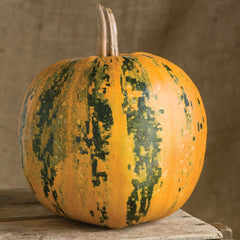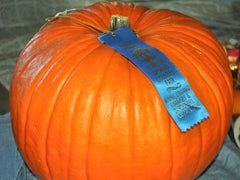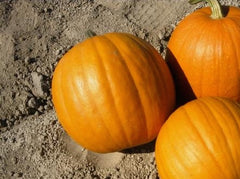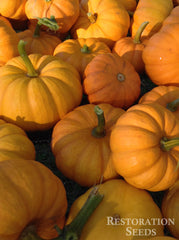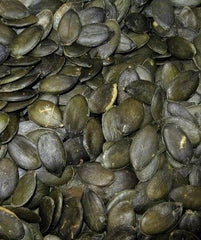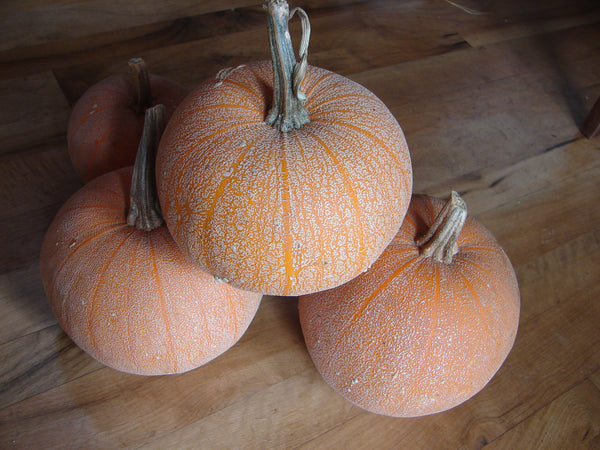Winter Luxury Pie
Cucurbita pepo
HOW TO GROW PUMPKIN
Start 1–2 indoors weeks before last frost and transplant after first true leaves appears. Start 2 seeds in 4” pulp pots that can be planted directly in the ground, thin to 1-2 plants. Direct sow after last frost or soil 70˚F, seeds will rot in cool wet soil, 5-6 seeds to a hill. Sow pumpkins to mature in September for fall market. Can transplant end of last frost with row cover. Pinch new blossoms midsummer to encourage larger set fruit size. Hard frost damaged fruit will not store well. Harvest before frost or after 1–2 nights of light frost. Clip stems close to vine. Harvest white pumpkins once foliage starts to die back, and place under cover. Direct sunlight causes skin to turn yellow. Soil pH 5.8-7.0. Hardiness zones 4-11. Annual.
Days from maturity calculated from the date of seeding. Average 176-300 seeds per ounce. Average 14.5M seeds per acre. Federal germination standard: 75%. Usual seed life: 6 years. Isolation distance for seed saving: 1/2 mile.
Planting Depth 1/2-1”
Soil Temp. Germ. 70-85˚F
Days to Germ. 3-10
Plant Spacing 18-24”
Row Spacing 6’
Days To Maturity 90–100
Full Sun, Moist Well Drained
Days from maturity calculated from the date of seeding. Average 176-300 seeds per ounce. Average 14.5M seeds per acre. Federal germination standard: 75%. Usual seed life: 6 years. Isolation distance for seed saving: 1/2 mile.
Planting Depth 1/2-1”
Soil Temp. Germ. 70-85˚F
Days to Germ. 3-10
Plant Spacing 18-24”
Row Spacing 6’
Days To Maturity 90–100
Full Sun, Moist Well Drained
Winter Luxury Pie Seed Count
1 ounce ≈ 169 seeds
.25 Pound ≈ 675 seeds
1 Pound ≈ 2,700 seeds
- 25 Seeds$4.10
- 250 Seeds$18.50
An heirloom with attractive, finely netted golden-orange skin and exceptionally smooth-textured and sweet, flavorful flesh. This makes the very best pumpkin pies, a true winter luxury! 5–7 lb. fruits. Tags: Harvest: Mid, Color: Orange, Season: Summer.
Meet Your Farmer
We promote fair trade, organic practices and environmental responsibility throughout the Restoration Seeds supply chain. Below are the family farmers and seed suppliers who bring our open pollinated seeds to you.
Lupine Knoll Farm
Certified Organic by Oregon Tilth
Seed grower since 2001


At Lupine Knoll Farm, Jonathan and Jessie Spero breed and sell both old and new open pollinated vegetable seeds. New introductions from Lupine Knoll include Top Hat sweet corn, Solstice broccoli, Emerald Fan lettuce and Siber-frill kale. Located in the Applegate valley of Southwest Oregon. Lupine Knoll has been certified organic since 2001.
Reviews
